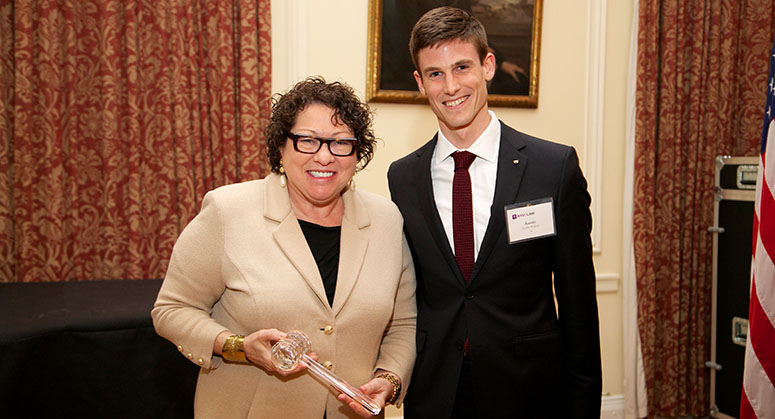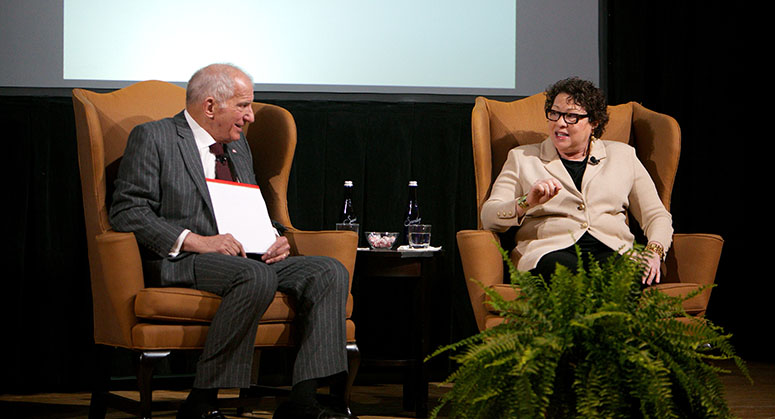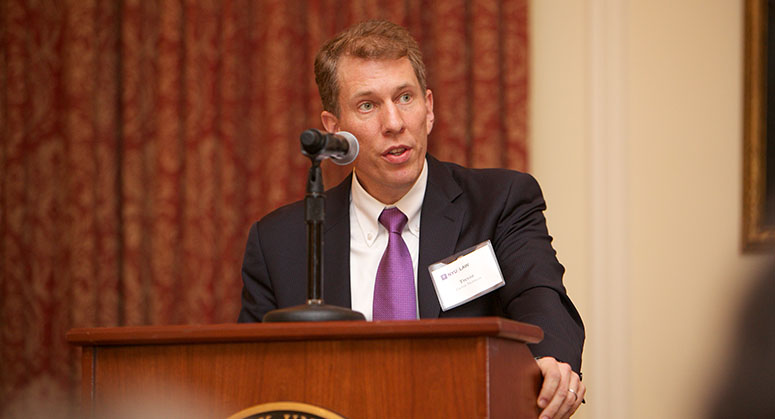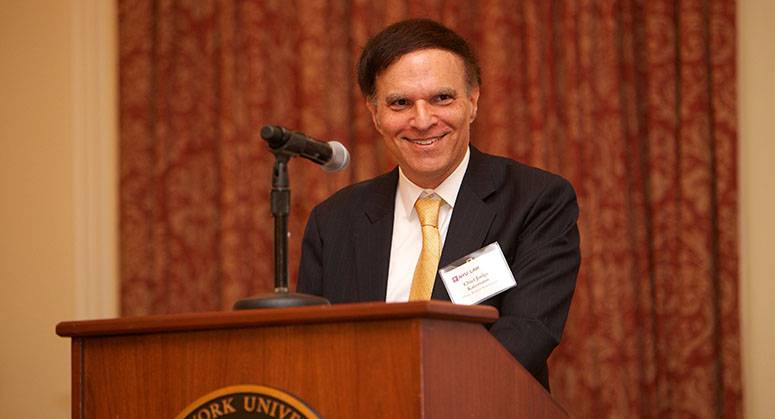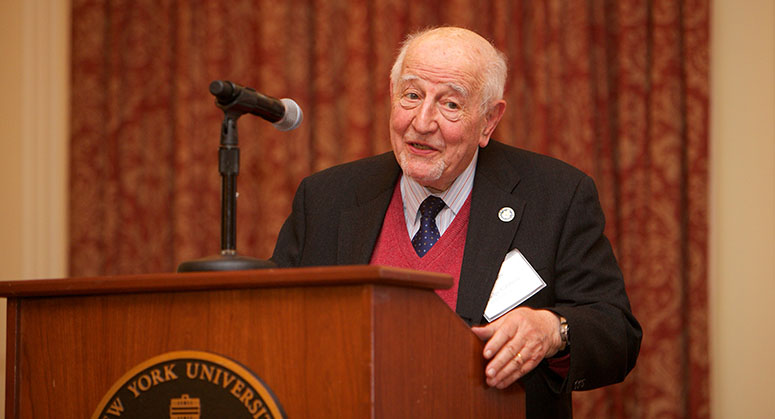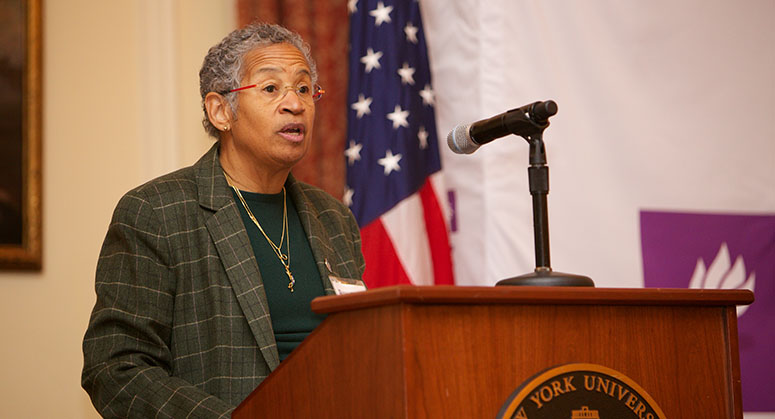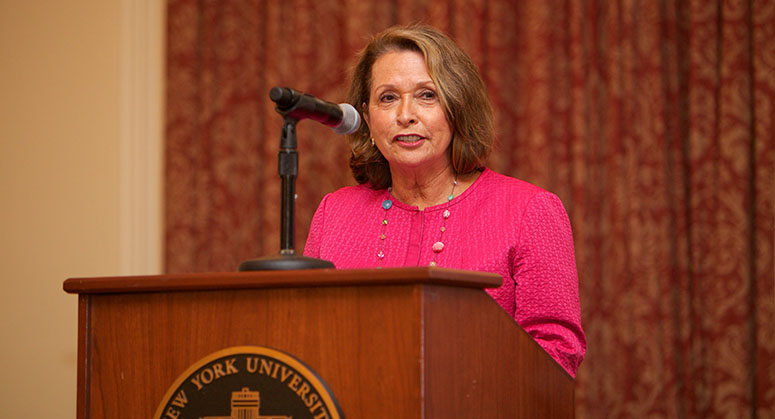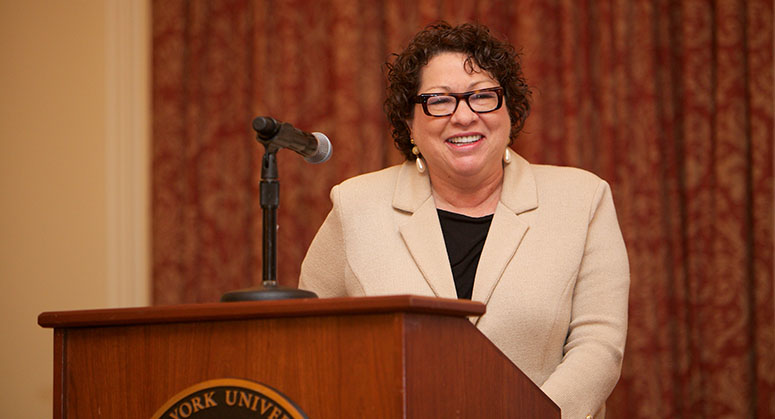In her visit to NYU Law on February 8, Associate Justice Sonia Sotomayor of the US Supreme Court did double duty, first engaging in a dialogue about civil jury trials, then receiving the glowing praise of some of her closest peers at the ceremony dedicating the 73rd volume of the Annual Survey of American Law to her.
At the start of a discussion between Sotomayor and Adjunct Professor Stephen Susman, executive director of the Law School’s Civil Jury Project and a renowned trial attorney, Susman reminded the audience of Sotomayor’s uniqueness among current Supreme Court justices: she is the only one who has participated in a civil jury trial both as a lawyer and as a judge.
Sotomayor, an unabashed proponent of juries, has nearly two decades of experience with them: 13 years as a lawyer followed by six as a judge. Sotomayor would compare her own views on the proper outcome of cases with her juries’ verdicts. Virtually without exception, she said, her internal determinations matched theirs.
To this day, family and friends still ask Sotomayor for tips on evading jury duty. “Why do you want to get off?” she wondered, adding that, for citizens, “This is the one activity where you’re asked to serve and to actually come to a decision on behalf of the society that you represent.”
At the dedication, four instrumental people from Sotomayor’s life in the law delivered heartfelt encomiums, beginning with Chief Judge Robert Katzmann of the US Court of Appeals for the Second Circuit, who had served with her on that bench for a decade. Remarkably, he and Sotomayor, whom he called “a sister to me,” had agreed on 100 percent of the 138 cases in which they were both involved.
Katzmann observed that “structure” has been a guiding principle for Sotomayor. “Law,” he said, “with its myriad and vibrant connections to practical lives of human beings, spoke to her the way a song or piece of music can speak to us when we immediately recognize something that makes sense to us, and we feel it and know it in our bones.”
Judge Guido Calabresi, another former Second Circuit colleague (and 2013 Annual Survey dedicatee), who taught Sotomayor and also fellow justices Samuel Alito and Clarence Thomas at Yale, spoke to Sotomayor’s moral courage.
Despite being a young Latina out of her traditional element at an Ivy League law school, Calabresi recalled, Sotomayor did not hesitate to challenge conventional thinking in Calabresi’s torts class.
This courage, he continued, did not flag when she ascended to the bench. Her refusal to tread cautiously as a district court judge imperiled her subsequent Second Circuit confirmation: “But Sonia had refused to let cautious careerism keep her from doing what she believed justice and law required.”
Sotomayor maintained the same integrity on the Second Circuit, Calabresi said, where she could understandably have deferred to her longtime mentor, Judge José Cabranes. Even when she arrived at the Supreme Court, Calabresi marveled, Sotomayor was not cowed by her junior status from voicing her opinions.
Judge Deborah Batts of the US District Court for the Southern District of New York deemed herself and her fellow speakers part of “a very deep bench of Sotomayor fans.” Batts segued from that sports metaphor into an account of one of Sotomayor’s most famous cases. Sotomayor’s preliminary injunction against Major League Baseball in 1995 ended a players’ strike just one day before the start of the season, making her, in the later words of Barack Obama, the woman who "saved baseball.”
Dawn Cardi, founder and partner at Cardi & Edgar, was a Legal Aid attorney when she argued her first case, opposing New York County Assistant District Attorney Sonia Sotomayor. One of Sotomayor’s biggest fears upon her Supreme Court confirmation, Cardi said, was being trapped in “the bubble,” where “people start to treat you differently because you are famous and powerful,” causing one to change for the worse. But, Cardi insisted, Sotomayor’s fear was unfounded; Sotomayor has never forgotten her humble Bronx roots and is unfailingly generous.
Accepting the Annual Survey dedication, a visibly moved Sotomayor said that, beyond the obvious honor, the most meaningful aspect of the experience was “the gift of palpably knowing, palpably feeling the love of friends whom I adore.”
Watch the conversation between Justice Sonia Sotomayor and Stephen Susman (1 hr):
Watch the Annual Survey of American Law dedication to Justice Sonia Sotomayor (1 hr, 3 min):
Posted February 12, 2016
